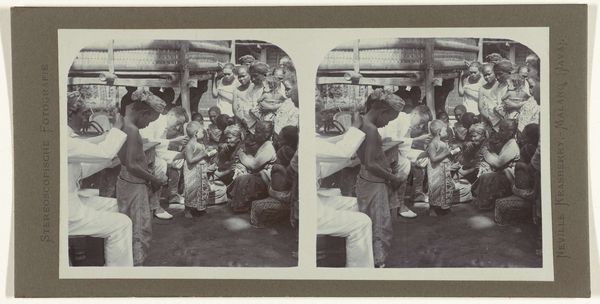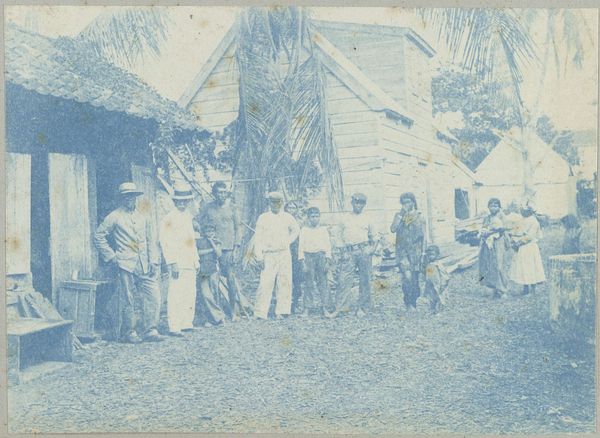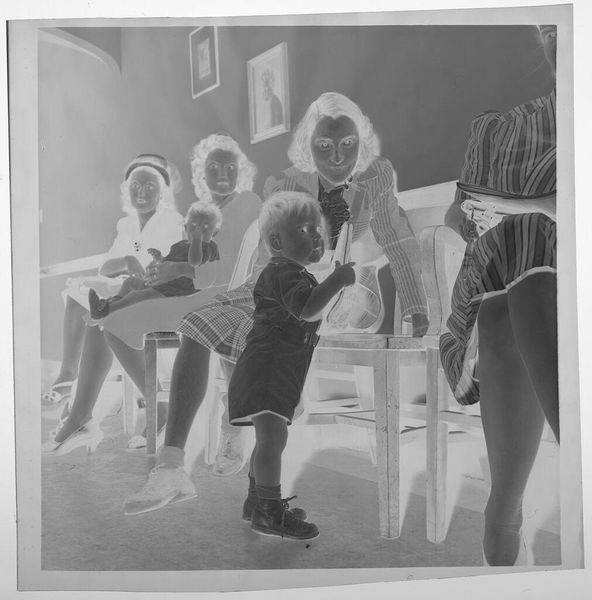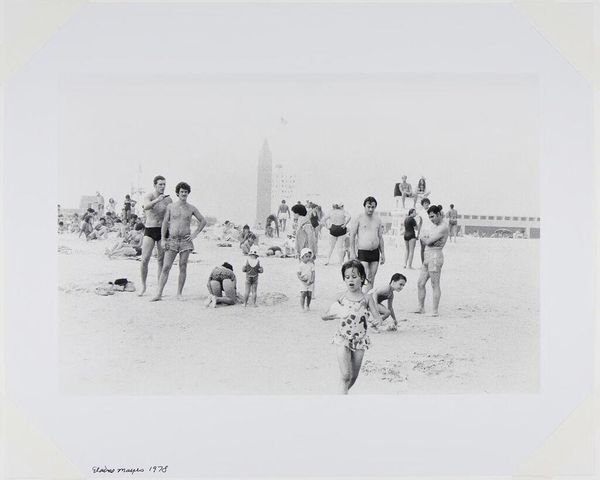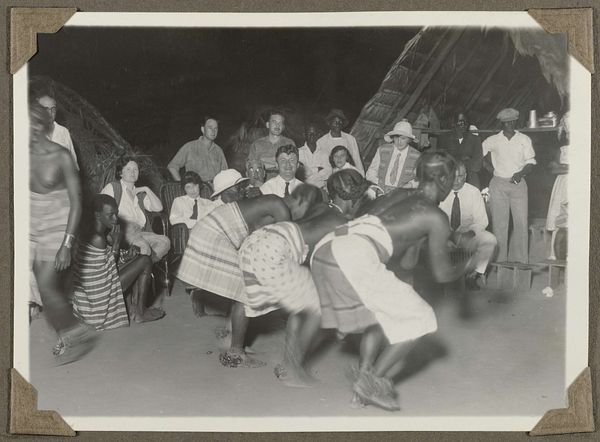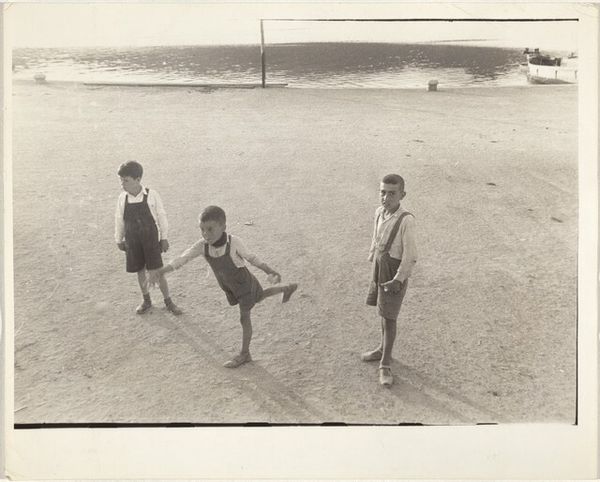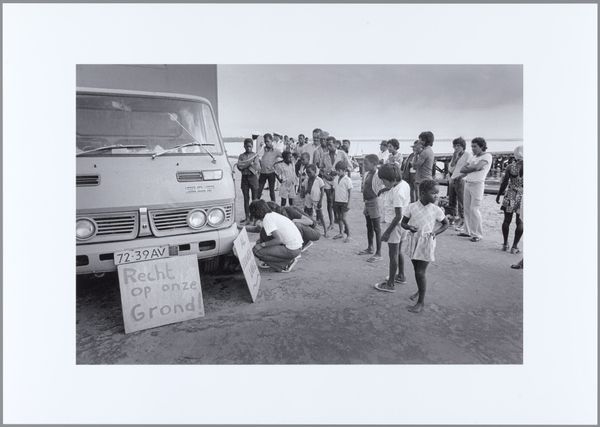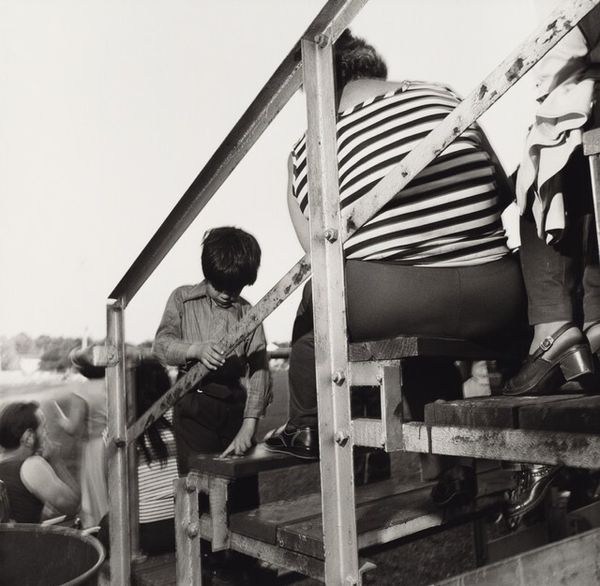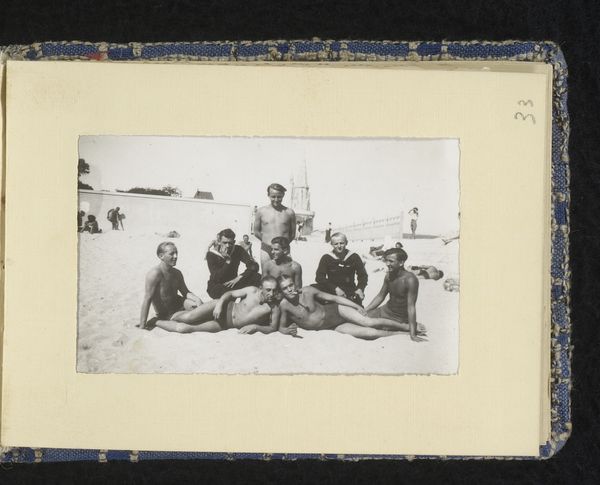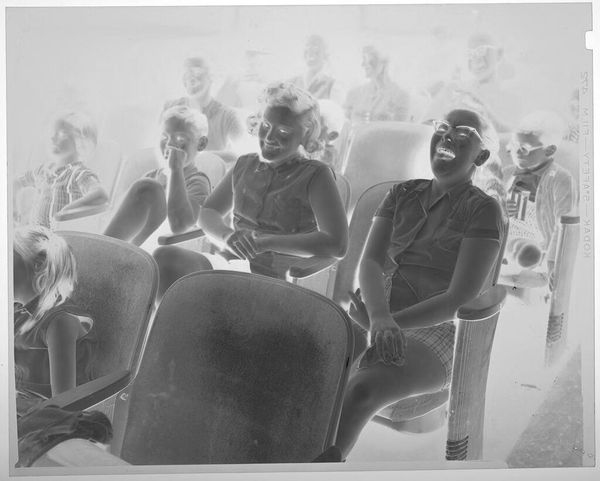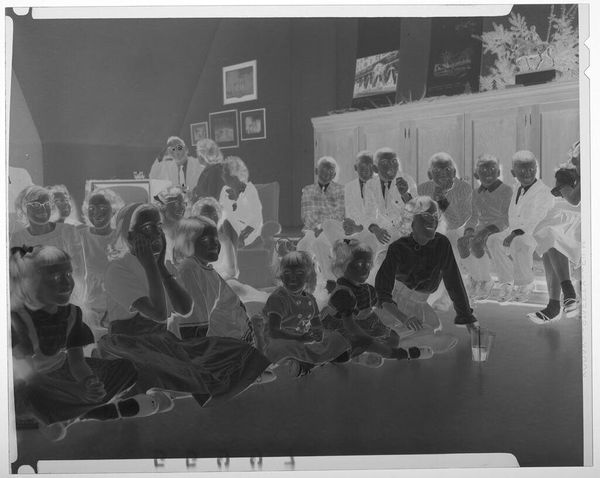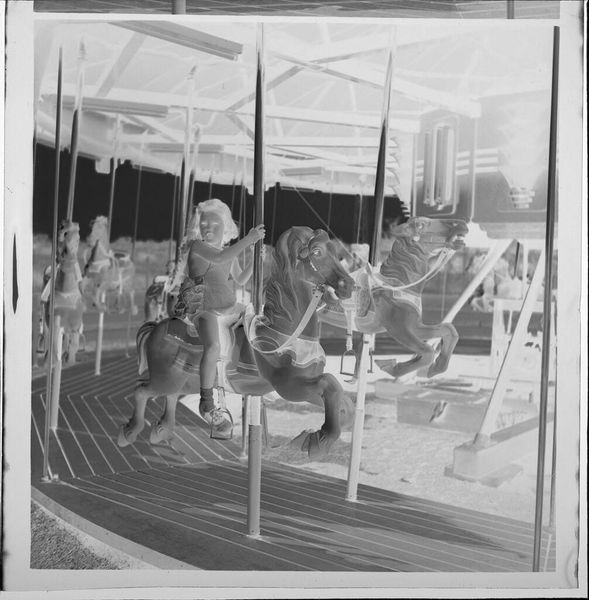
photography, gelatin-silver-print
#
contemporary
#
landscape
#
photography
#
group-portraits
#
gelatin-silver-print
Dimensions: height 420 mm, width 595 mm, height 300 mm, width 448 mm
Copyright: Rijks Museum: Open Domain
Editor: Here we have Cary Markerink’s photograph, "Vergadering Bigistone 3 december 1976," possibly from 1976, rendered as a gelatin-silver print. I’m struck by how this informal gathering is documented. What draws your eye in this image? Curator: For me, it’s the very act of photographic documentation, and the making of this specific photographic print. Markerink's use of the gelatin-silver process is critical. Think about it: this process requires a level of technical skill, access to specific materials, and, critically, reflects a particular form of labor involved in translating this ‘meeting’ into a tangible object. Who had access to these technologies, and who did not? And what’s the social context of its creation? Editor: That’s an interesting point! It makes me wonder about the power dynamic implicit in who gets to represent whom. Curator: Exactly! The print becomes evidence, but also a commodity. Considering that title— "Meeting Bigistone 3 december 1976" —and knowing Bigistone is a location, what kind of meeting do you think this image documents? Are they viewing a map, maybe discussing land use? Understanding the material conditions allows us to see the image as part of a larger system of resource management and power. This is not simply about ‘art’; it’s about labor, production, and exchange. Editor: So, it’s less about the people *in* the photograph and more about the *process* of creating the photograph and what that process signifies? Curator: Precisely. This gelatin-silver print signifies access, control, and the translation of an event into a physical thing that can be owned, displayed, and traded. These issues of ownership and use are especially pertinent when thinking about art's place in shaping political realities, as well. Editor: I never considered photography in quite this light. Thank you, that's a very different and enriching perspective. Curator: And thank you! Considering the materiality definitely forces us to ask crucial questions that would otherwise be unseen.
Comments
No comments
Be the first to comment and join the conversation on the ultimate creative platform.
